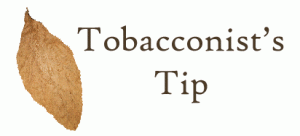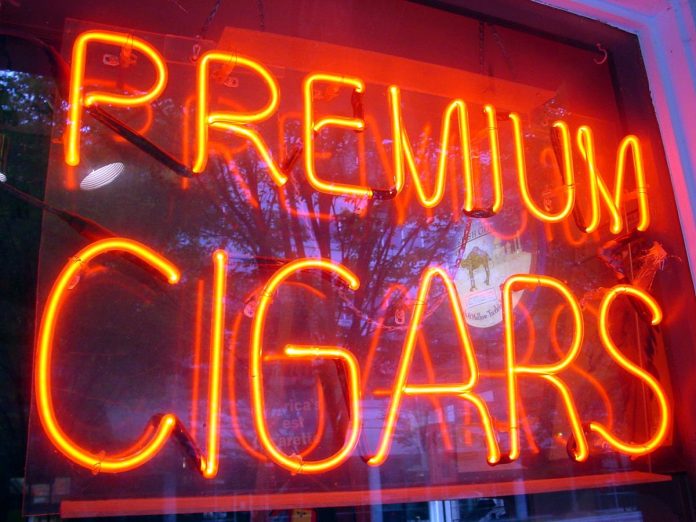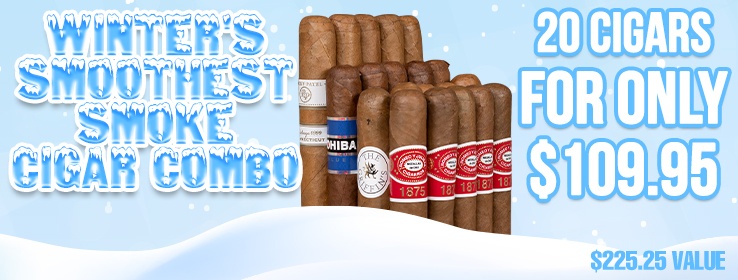Part Four: Binders – The Other Wrapper Leaf
Pork may be the “other white meat,” but cigar binders are the “other wrapper leaf” on modern cigars.
Cigars as we know them, composed of wrapper, binder and filler, are relatively new inventions. Dating back to the 1640’s, the first cigars constructed using all three components were constructed in Seville, Spain. Prior to the development of the three layers, “cigars” were constructed of loose tobaccos shabbily bound with a single outer leaf. These “cigars” were not very popular and most tobaccophiles of the time opted to smoke their tobacco in a pipe. It wasn’t until the Peninsular War in 1808 that the modern cigar caught on in Europe and began to spread across the world.
But what is it about the addition of the binder leaf that makes a modern premium cigar?
Binder Basics:
The binder leaf, called “la banda” or “capote” in Spanish, is known as “the first leaf on the table,” a reference to the fact that as a torcedor prepares to roll a premium cigar, the process begins with the binder leaf being placed on the work table and smoothed flat.
The filler blend is then formed in the torcedor’s hand and placed on the binder leaf. The binder and filler are then rolled together forming the “bonche.” The finished bonches are then placed in molds and pressure is applied to give the cigars their finished shape.
Finally, after being removed from the molds, the shaped bonches are at last surrounded with their wrapper leaf, completing the cigar.
In order for this whole process to be successful, there are certain criteria a binder leaf must meet…
Physical requirements of a binder leaf:
Strength and pliability:
In order to be used in a premium cigar a binder leaf must be strong and flexible enough to endure the rigors of the rolling and molding processes. As the torcedor wraps the filler leaves in the binder leaf, pressure is used to form the bonche into a rough cigar shape. This manual pressure puts a strain on the binder leaf as it is squeezed to contain the filler leaves and prevent the filler leaves’ natural desire to relax and expand. An inadequately elastic or weak binder leaf can tear as the bonche is being formed or burst as filler tobaccos expand.
The completed bonches are placed into a cigar mold and pressure is applied using a press, squeezing the molds to create the finished shape of the cigar. This molding process places a great strain on the binders as they are squeezed to conform to the shapes of the cigar mold. An inelastic or thin binder leaf can split, crack, or burst during this process, resulting in the bonche having to be re-rolled using a new binder.
The binder leaf is also critically important to how well a cigar burns. By creating a smooth surface onto which the wrapper leaf is applied the binder leaf serves as an “interface” between the burning filler leaves and the wrapper. If the binder does not maintain contact with either the filler or wrapper the burn of the cigar can be affected creating uneven burns, split wrappers, or worse.
Quality and condition:
In order for the cigar to have a finished, smooth appearance the binder should be of high quality, with minimal veining and no large imperfections. Problems such as bumps or veins in the binder can usually be appreciated through the wrapper leaf diminishing the physical beauty of the finished cigar.
Burning properties:
The binder must have sufficient combustibility to ensure a proper burn. An inadequately aged or low quality binder may burn slower or faster than the other tobaccos, leading to an uneven or irregular burn. Tunneling and “canoeing” are often the result of problems with the combustion rate of the binder.


If you find your cigar is burning faster down one side (“canoeing”) try touching up the slower side by focusing your lighter’s flame under the unburned binder leaf (red lines). If you can relight the binder (along the orange line), the wrapper and fillers should catch up.
The binder’s contribution to overall aroma and taste:
One of the most often overlooked contributions binder leaves make to premium cigars is the degree to which they add to the overall aroma and taste of each blend.
Many binders are often actually wrapper leaves that have been “downgraded” due to physical flaws such as a hole or tear on one side of the leaf. A wrapper turned binder will contribute similar qualities to the cigar as it would if it were used a wrapper.
The same aromas and tastes are conveyed by each particular tobacco varietal when used as binders, although sometimes to a lesser degree. A Connecticut Broadleaf binder will contribute a sweet-smoky rich profile, a Cameroon binder a sweet-spicy one. Each unique tobacco varietal, each priming, will contribute its own unique qualities to the finished product, the blend.
Binder leaf selection and processing:
Binder leaves are typically taken from the lower primings of the tobacco plant, usually the 2ndthrough the 4th. These lower primings tend to produce larger, thicker, more elastic leaves, all qualities vital to a binder leaf.
Binder leaves are processed in much the same fashion as filler and wrapper leaves. During the process of “asentamiento” leaves that do not meet the physical requirements to be used as wrappers are separated and reclassified as binder leaves. The binder leaves are then classified into 4 “tiempos:” Seco, viso, ligero and medio tiempo. The classification of the leaves into tiempos is based mainly on the size, color, thickness, and smoking qualities (combustion) of the leaves – not on physical appearance. The tiempos also correlate closely to the priming the leaves came from (the height of the leaf on the plant).
Each tiempo has its own unique characteristics:
Tiempo Seco:
– Usually thin and less oily
– Have good combustion
– Require shorter fermentations
– Must be physically perfect (otherwise they are reclassified as fillers)
Tiempo Viso:
– Thin with some oils
– Thicker than tiempo seco
– Need more humidification when used
– Have more balanced characteristics (from middle primings)
Tiempo Ligero and Medio Tiempo:
– Not typically used as binders, but this trend is changing
– Taken from high primings
– Contain high quantities of organic compounds and few minerals
– Require prolonged fermentation

Taken from the center of the plant, tiempo viso leaves are considered by many to contribute the majority of a cigar’s aroma.
Once the binder leaves have been classified into tiempos, they are sorted again, this time by strength or “forteleza.” Forteleza is measured on a 1 – 4 scale with 1 being the mildest and 4 being the strongest. Binder leaves classified as forteleza 3 and 4 are once again reclassified, this time becoming filler leaves.
Aging binder leaves:
The sorted binder leaves now begin the curing process. Binder leaves are stored “en tercio” for differing lengths of time based on their tiempo:
Tiempo volado – 3 months
Tiempo seco – 6 months
Tiempo ligero – 9 months
Maduro (such as Broadleaf and San Andreas Negro) – 12 months or more
After the binder leaves have been cured they are sent for slow aging before finally being used in the manufacture of premium cigars.
Tasting Guide: A Selection of Premium Cigars with unique wrapper/binder combinations
Alec Bradley Family Blend – Honduran Criollo ’98 wrapper with an Indonesian binder
Alec Bradley MAXX – Nicaraguan habano seed wrapper with a Costa Rican binder
Camacho 10th Anniversary – Honduran corojo (non-hybridized, original varietal) wrapper and binder
C.A.O. Concert – Ecuadorian habano seed wrapper and US Connecticut Broadleaf binder
Cohiba Edicion Diamante – Aged Cameroon wrapper and Indonesian binder
Gurkha Legend – Connecticut Broadleaf wrapper with a Cameroon binder
Gurkha Ninja – Brazilian Mata Fina wrapper with a Dominican Criollo binder
H. Upmann Sun Grown – Ecuadorian Sungrown wrapper with a US Connecticut Broadleaf binder
Carlos Torano Vault – Nicaraguan shade-grown wrapper with a Honduran (from the Jamastran Valley) and Nicaraguan (from Isla Ometepe) double binder
Origen by J. Fuego – Brazilian Corojo wrapper with a Costa Rican Corojo binder
Vega Fina – Ecuadorian Connecticut wrapper with an Indonesian binder
Zino Platinum “Z-Class” – Dominican wrapper (from the Yamasa region) with a Peruvian Pelo d’Oro binder
Sancho Panza Double Maduro – US Connecticut Broadleaf Maduro wrapper and binder
One of the principle reasons we enjoy premium cigars is that each new blend offers a unique flavor and aroma profile which affords us a new smoking experience with each new brand sampled. As you look to try new cigars, don’t overlook the binder leaf in the blend. Each different tobacco varietal, each different type of leaf, contributes its own different characteristics to the cigar as a whole.
And remember, that in order to know what cigars best suit our palates, we need to know the cigar we are smoking: wrapper, binder, and filler.
Each cigar truly is the sum of its parts.
Read the other parts of the Frugal Aficionado here….
Good smokes!
Marty Klausmeier, Contributor





